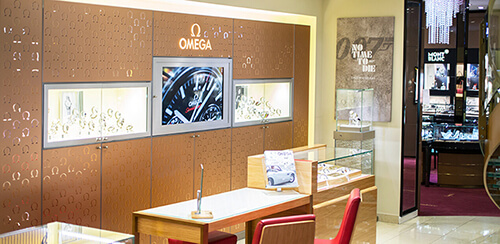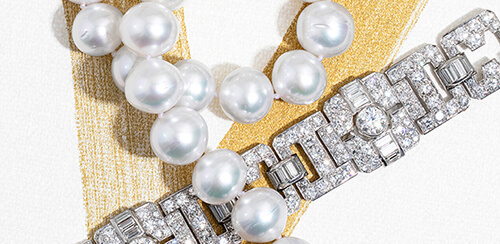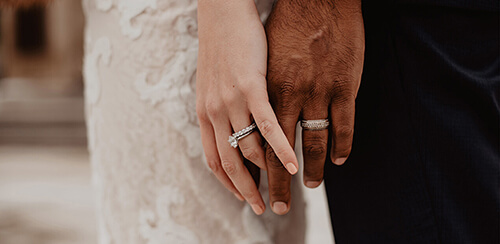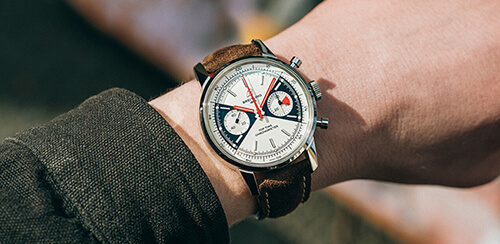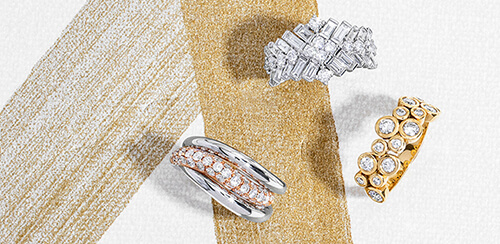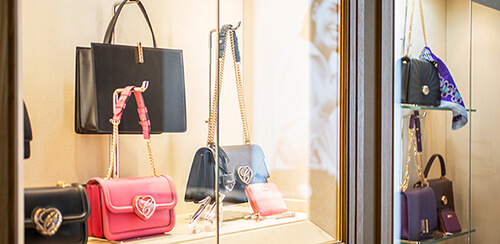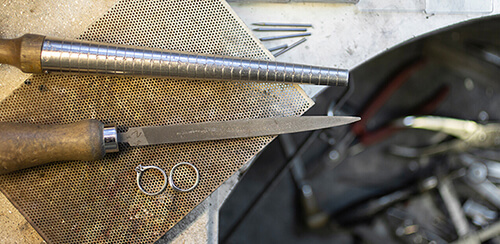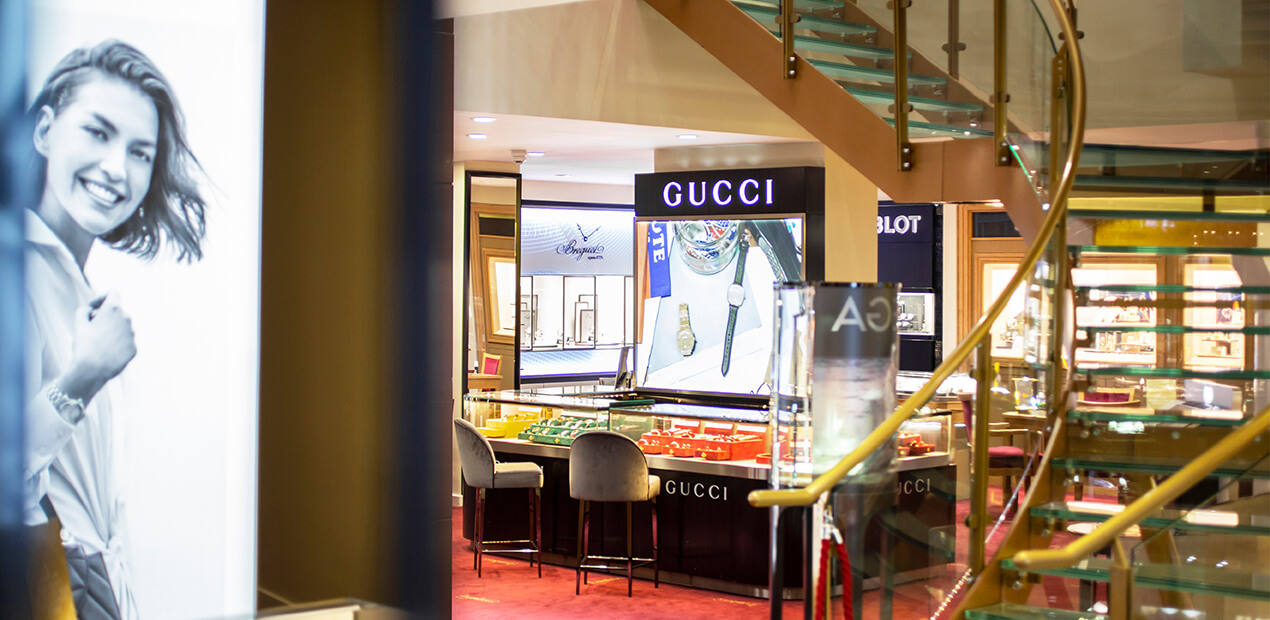Toggle Nav
June Birthstone: Pearl
01/06/2021

One of the most beloved and timeless gems of all time…
Pearls – natural and cultured – occur in a wide variety of colours. When you think of pearls naturally you would think white and cream in colour, but the palette of colours extends to almost every hue.
Not only the birthstone for June but also the traditional anniversary gift for 30 years of marriage. Also, a simple strand of pearls would once be gifted to young women celebrating their sweet 16th birthday. Once reserved only for being worn by Kings and Maharaja’s of India. They would wear pearls to highlight their wealth and style.
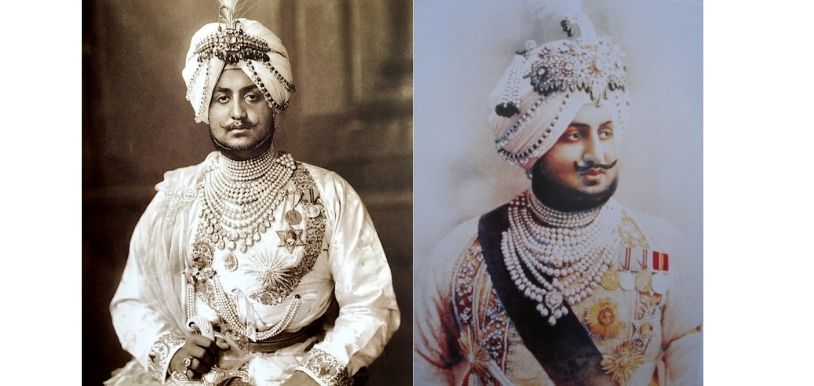
Here you can see Maharaja Bhupinder Singh of Patiala by Bandyk in 1911. Famous for his love of jewels, he commissioned all the best Parisian jewellers, particularly Cartier and Boucheron, to make incredible jewelled works of art, such as the pearl necklace he sports here.
Pearls are incredibly complex to ‘grow’. Nacre produced by the mollusc forms around an implanted tissue sample with or without the presence of a bead nucleus. This also forms the mother of pearl which lines the inside of the molluscs shells.
Of more than 100,000 species of mollusks only 30-35 can produce whole cultured pearls and of those, only around 14 are used. Natural pearls are very rare most often as a by-product of gathering wild molluscs.

There are 4 major whole pearl types…
Freshwater, Akoya, Tahitian and South Sea.
All of these pearl types will be touched upon within this blog.
How they are formed and what the differences are. We will even discuss how to take care of your stunning pearls in general.
Freshwater Pearls
The mussel species that produces Freshwater pearls is called Hyriopsis cumingii, commonly known as the “triangle mussel”. Although the Chinese knew how to cultivate the earliest blister pearls back in the 13th century, it wasn’t until the mid-1990s when they started producing high quality harvest. These pearls occur in a wide range of sizes, shapes and colours both natural and enhanced.
The typical size of a Freshwater Pearls range from 4-14mm, but can be larger up to 20mm. On average less than 2% of these pearls turn out to be round. Most are button, semi-baroque to baroque in shape. Only around 1 in 500,000 are near round. Natural colours include white to cream, yellow, orange, pink and shades of lilac to purple.
Mussels can be harvested multiple times if they are healthy to put back into the water. All 1st harvest pearls from these muscles are achieved by implanting 12-15 tissue samples from a donor muscle into each valve of the muscles mantile tissue. Resulting in up to 30 pearls at harvest from each mussel.
If at 1st harvest the mollusc is happy and healthy it might then have nuclia inserted into the pearl sack. These are normally flat or can be round bead nuclia. To create coin or as near to rounded shape as possible. If still healthy at 2nd harvest, the pearls could be removed, and a larger bead could be inserted. Otherwise, they could be simply returned to the water and allow baroque pearls to form.
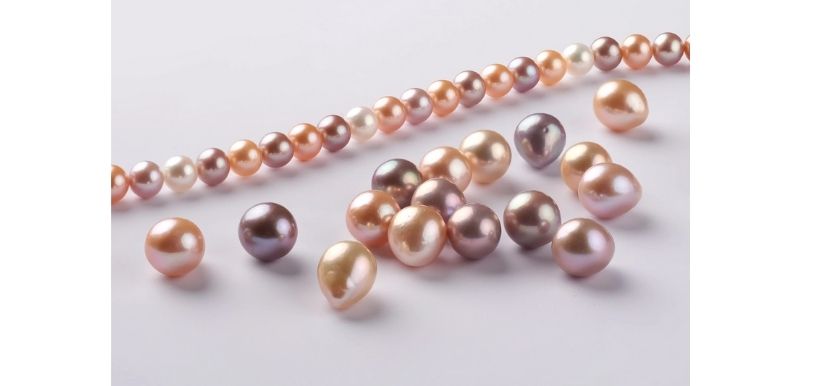
At full grown these muscles can be around 30cm in diameter, this is equivalent to the approximate size of a dinner plate. Growth period for a pearl most commonly 3-5 years. With 2nd gen being around a year and the 3rd gen round bead nucliation with harvest 1-2 years later. With an actual estimated 1,500 metric tonnes, this tonnage represents more than 2 billion pearls grown in China, this dwarfs the production of those in the US and Japan by far.
Akoya Pearls
Possibly the best known and the most expected to be found in jewellery stores is the Japanese Akoya Pearl. These are a saltwater Pearls cultured in Pinctada Fucata, Cheminitzu, Imdricata, Vulgaris & Radiata. The names may sound complex, but these are essentially Akoya Pearl Oysters which are farmed in natural inlets around Japans coastline.

Kokichi Mikimoto was the first to start culturing these Pearls. He was known as the father of culturing whole saltwater Pearls and the driving force of today’s mainstream global pearl market. He began by culturing blister Pearls in 1890 and by 1908 had pretty much perfected the technique to produce whole Pearls. These techniques he used are still being used today.
By 1916 the whole pearls being produced were becoming close to ‘near-round’ in shape and were producing enough quantities to reach a global market. By 1938 there were a reported 360 farms producing approximately 11 million pearls. This production has steadily risen and by 2008 a reported 18.8 metric tonnes of Akoya saltwater Pearls were being produced annually for the export market.
‘Near-round’ to ‘round’ whole Pearls are the hardest to produce and most highly prized shapes in all Pearl types. Akoya Pearls are typically 2-11mm in size with an average size of 6-8mm found in the market and most preferred. Averaging 70-80% of production achieving ‘near-round’ to ‘round’ shapes at harvest is mostly due to the nucleation process starting with a round mother of pearl bead and an accompanying tissue sample from the donor oyster.

These saltwater oysters are a lot smaller than the freshwater muscles used to culture whole freshwater pearls, only being approximately 2-3 inches at 2-3 years old. Due to their smaller size the oyster can only accommodate up to 5 nuclei, with normally only 2 being inserted into the gonad of each mollusc, 1 larger and 1 smaller. With only 1 neucliation for these oysters when they are around 2-3 years old and a Pearl growth period of 6 months to 2 years, averaging 10-14 months of growth.
Natural colours occur in silver, white & cream. But most desired in today’s market is an overlying pink hue natural or normally enhanced. With the highest lustre possible, this being achieved by harvesting the pearls in the cooler months of winter.
South Sea Pearls
South Sea pearls are commonly far larger than other pearl types and have a unique lustre quality – a soft reflection due to the large aragonite platelets that make up the pearl. They also have the thickest average nacre of all cultured pearls. These factors make South Seas both unique and valuable. South Sea pearls have the highest value and command the highest prices of all types of pearls.
Their large size, limited culturing area, and prolonged growth period all combine to make South Sea pearls the rarest of all pearl types. Found in colours ranging from optic white to a deep, honey gold, these pearls are prized by collectors and designers alike. The lustre of South Seas pearls, no matter their colour, is soft and luxurious. Only a small percentage of South Seas are spherical and as such, full strands of matched pearls are extremely unusual.
It took 37 years to assemble the collection of 35 perfectly matched large golden South Sea pearls for this newly unveiled necklace by Jewelmer Joaillerie. The golden South Sea pearl is among the rarest pearl species because a single pearl requires pristine marine environments, numerous steps, and a minimum of five years to grow in the gold-lipped Pinctada maxima, the world’s largest species of mother-of-pearl oysters.

It requires 377 steps and five years to see if a single pearl, normally in the size of 10 to 13mm, would emerge from its mother oyster.
Jacques Christophe Branellec, Jewelmer’s Deputy CEO
As with other saltwater oysters, the South Sea pearl oyster is bead nucleated. However, the growth period is approximately 2-4 years, unlike the akoya pearls, which develop in less than half that time. Being a delicate organism, this type of pearl oyster is particularly susceptible to disease and stress, which is one reason why the culturing area for South Seas pearls is quite limited. Attempts to expand South Sea pearl farming have met with little achievement because the oysters do not flourish outside their native, ecological environment.
South Sea pearls can be found in the range of 8 to 20mm, with the average being 12mm. Although extremely rare, some pearls have been found larger than 20mm.
Only 10-30% of each harvest will be round or near-round, so when you see a full strand of round South Sea pearls you know they are special. Baroque and drop-shapes are often used in high-end designer jewellery to showcase their unique shapes and lustre.

Taking Care of your Pearls
Diamonds might be "forever", but pearls can also last a lifetime with proper care.
- Remember the golden rule for pearls… They should be the last thing you put on, and the first thing to take off. This means putting your pearls on after you have got dressed, applied your make-up, perfume, and hair products.
- Once you have taken your pearls off, before putting them away; ensure you give them a wipe with a soft chamois cloth to remove any oils or perspiration.
- Never wear your pearls if the string is wet. Wet string can stretch and can absorb dirt and grime.
- Do not wear your pearls in the pool, bath, sauna, or shower. In fact, never submerge your pearls even when cleaning them.
- Wear them! Yes, as simple as that. Pearls benefit from the moisture of the body, so wear them often to keep them looking their best.
- If you wear your pearls regularly try to have them re-stringed once a year to keep the string clean and strong.
Visit us in-store to view our incredible range of pearl jewellery. From classic pearl necklaces to modern and edgy spins on a classic.

